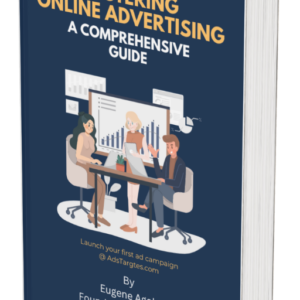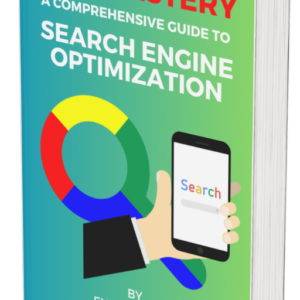In 2025, mid-tier publishers face mounting pressure to extract higher yield from their inventory.
Ad costs are rising, cookie deprecation looms, and advertisers demand more transparency and performance accountability.
Choosing the right programmatic ad network can make or break your monetization strategy so it’s important to pick the right one.
Let’s talk about how you can do that.
What Mid-Tier Publishers Should Prioritize in 2025

Mid-tier publishers typically operate in a space where they attract meaningful but not massive traffic—often in the range of tens of thousands to low hundreds of thousands of daily visitors.
Their challenges differ from both small niche blogs and enterprise publishers. Before selecting a programmatic ad network, mid-tier publishers should focus on several key criteria:
#1. Transparency & Control: You need visibility into bid floors, auction logs, and a clear revenue share. Some networks obfuscate demand paths or add hidden markups, which erodes yield.
#2. Latency & Ad Load Time: Poor ad performance or slow load times kills user experience and engagement. Networks that deliver asynchronously or have lightweight scripts are preferable.
#3. Diverse Demand / Fill Diversity: Relying on just one DSP or region puts you at risk of low fill or low competition. The best programmatic ad networks bring multiple demand sources, especially across geographies.
#4. Flexible Payment Terms & Low Thresholds: As a mid-tier publisher, you can’t afford to wait many months for payout or meet high minimum thresholds before you get paid.
#5. Support for Emerging Formats & Cookieless IDs: With cookie deprecation and growing emphasis on native, video, CTV, and contextual ads, pick networks that support future formats and identity solutions.
#6. Access to Private Marketplace Deals (PMPs): Direct deals or curated private marketplaces can provide higher CPMs and shield inventory from open RTB volatility.
If a network checks off at least four of these criteria, it’s worth serious consideration. Below are seven programmatic ad networks that stand out for mid-tier publishers in 2025.
#1. PubMatic
PubMatic is a supply-side platform (SSP) with strength in yield optimization, header bidding, and access to global demand.
Many consider it among the most stable programmatic ad networks in the market for publishers who want scale without sacrificing control.
PubMatic offers tools like real-time analytics and yield curves to help publishers adjust floors by geography and device.
It supports both open RTB and private marketplace deals, which is ideal for mid-tier publishers trying to scale while preserving premium inventory.
Their demand partners include major DSPs and agencies, which broadens competition on your inventory.
Because PubMatic invests in identity integrations and alternative IDs (such as Unified ID or its own identity layer), it helps publishers manage the transition from third-party cookies.
As programmatic trends show, cookie deprecation is accelerating and advertisers want viable alternatives.
Among mid-tier publishers, PubMatic is valued for giving consistent eCPMs even during slower traffic periods, because of its demand network.
While PubMatic’s minimums may be higher than some niche networks, the tradeoff is stronger bidding competition and reliability.
#2. Setupad
Setupad is a specialization platform built to improve monetization efficiency.
Many publishers report a 30% uplift over their existing monetization setup after integrating Setupad.
For mid-tier publishers, Setupad is appealing because they provide direct ad operations assistance, lightweight header bidding wrappers, and seamless integration with Google AdX and other demand sources.
Their goal is to reduce friction for publishers who are not ad ops experts. They also integrate impression-level optimization and server-to-server connections to minimize latency.
One advantage of Setupad is that they often accept publishers with moderate traffic and push direct demand, reducing your reliance on remnant inventory.
They are also Google Certified Publishing Partners (GCPP) and integrate multiple SSPs in their stack.
Because Setupad simplifies the ad stack and often treats your inventory holistically, you can focus more on content growth and less on technical optimizations.
That frees you to scale while still benefiting from improved yields.
#3. SmartyAds
SmartyAds is commonly categorized among the programmatic ad networks with a full-stack architecture that spans DSP, SSP, and exchange functions.
Because of this integrated structure, they allow tighter optimization loops on both sides of the transaction.
For mid-tier publishers, SmartyAds offers value in several ways:
#1. Their header bidding or in-app wrappers are engineered to be low-latency.
#2. They provide multiple integrations with DSPs, enabling demand diversity.
#3. Their platform supports emerging formats such as native, video, rewarded, and interstitial.
Because SmartyAds is both buyer-facing and seller-facing, it often captures efficiencies and passes part of them to publishers.
In addition, they can help with identity resolution, which is crucial as cookie-based targeting erodes.
In H1 2025, average CPMs increased globally by 4.7%, showing that demand is still rising—but networks without identity support may lose ground.
Many mid-tier publishers adopt SmartyAds as a secondary SSP or fallback to complement their main stack, because it often fills gaps that others miss.
#4. Xandr / Microsoft Advertising
Xandr (now part of Microsoft Advertising) is an advanced adtech platform offering supply-side solutions and access to Microsoft’s wide demand ecosystem.
Among programmatic ad networks, Xandr appeals to publishers aiming for serious scale and partnership with premium buyers.
Xandr offers deal-level controls, identity integrations, and cross-device targeting. Its publisher tools include floor control, analytics, and insights into bid density.
Because Xandr integrates with Microsoft’s broader ad operations, publishers may find access to demand segments tied to LinkedIn, Bing, and enterprise advertisers.
For mid-tier publishers, Xandr provides a path to large buyers who ordinarily don’t bid on smaller sites.
That said, working with Xandr may involve stricter quality and content policies, so publishers must meet editorial and compliance standards.
Also, as identity solutions grow in importance, Xandr’s backing gives it resources to stay competitive in the cookieless era.
With identity matching and partner identity graphs, they are positioning to remain relevant as programmatic evolves.
#5. OpenX
OpenX is a well-known SSP historically, and continues to be one of the more stable programmatic ad networks for publishers of varying sizes, including mid-tier.
OpenX is attractive because of its reputation for strong yield management and curated demand.
With OpenX, you get access to header bidding integrations, a robust analytics dashboard, and negotiation for private deals.
Their demand partners typically include large DSPs and agencies, which helps with consistent competition across geographies.

One of OpenX’s strengths is balancing revenue share and technology overhead.
As traffic grows, their tools (like dynamic floor pricing by segment) help you adjust in real time. For mid-tier publishers, this ability to micro-optimize inventory is critical.
OpenX also invests in identity solutions and global expansion, ensuring it remains relevant even as programmatic norms shift.
Placing OpenX in your stack, alongside another SSP, can provide a stable backbone for monetization.
#6. Sovrn
Sovrn is less flashy than some others, but it stands out as a programmatic ad network that emphasizes ease, transparency, and tools designed for publishers.
Its technology gives moderate publishers access to yield tools and additional monetization levers.
One recent move: Sovrn announced a partnership with AI monetization platform Dappier to enable conversational ad formats across AI agents.
That indicates they’re pushing into next-gen ad formats.
Sovrn offers analytics dashboards, header bidding integrations, and is known for being supportive of publishers rather than being demand-first.
Because it has lower bureaucracy, onboarding tends to be faster. Its requirements are often more flexible for publishers who do not yet have massive scale.
For mid-tier publishers, Sovrn can act as a complementary SSP, especially for traffic segments or geographies where your primary SSP underperforms.
Using Sovrn in reserved inventory or as a fallback helps cushion your revenue and smooth yield gaps.
#7. AdButler / Broadstreet
While not always referenced in lists of top SSPs, AdButler and Broadstreet are ad platform providers that can be configured as programmatic ad networks when used with open RTB or header bidding modules.
These hybrid platforms allow more publisher control, especially at mid-tier scale.
AdButler, for instance, provides white-label ad serving, ad rotation, and supports plugging in external demand sources—meaning you can layer DSP demand into it.
Broadstreet is often used in regional or local publishers where ad operations flexibility is more important than raw demand.
For mid-tier publishers that are comfortable managing some parts of the pipeline, hybrid platforms like these offer the creative advantage of combining direct deals, fallback demand, and transparent yield control.
Because not all inventory requires full automation, you can assign high-value ad units to direct or PMP deals while routing remainder through programmatic channels.
Using hybrid setups with external DSP demand (via standard protocols) effectively makes them into functioning programmatic ad networks without sacrificing control.
That flexibility can be especially useful when scaling or testing new formats.
How to Build a Hybrid Stack That Outperforms
In 2025, relying on a single network is risky. The top-performing mid-tier publishers create a hybrid stack combining multiple programmatic ad networks and tailoring each network’s role. Here’s a recommended approach:
#1. Primary SSP (e.g. PubMatic or Xandr)
Use your strongest network as the core demand hub. This is where most of your inventory flows, especially high-value geos.
#2. Secondary / Fallback SSPs (e.g. OpenX, SmartyAds, Sovrn)
These fill demand gaps and compete for inventory your primary doesn’t win. They provide redundancy.
#3. Private Marketplace Deals (PMPs)
Segment your premium inventory (e.g. above-the-fold, video, native units) and open it to direct deals via PMPs. Use your SSPs to facilitate those deals rather than sending them to open RTB.
#4. Hybrid / White-Label Layers (e.g. AdButler, Broadstreet)
Use these for direct-sold or region-specific demand, then layer in DSP or open RTB demand via adapters. This gives you maximum control.
#5. Identity & Data Layer
Incorporate identity providers, first-party data, and clean room integrations. As third-party cookies phase out, these layers will determine your long-term yield potential.
#6. Automated Yield Optimization
Use real-time bid feedback, floor scanning, and bid prediction to dynamically adjust to competition. Many programmatic ad networks now offer such automation.
#7. Geographic and Format Segmentation
Treat mobile, video, connected TV, native, and CTV segments separately. Let different programmatic ad networks compete where they shine.
By layering networks, you minimize dependency and maximize yield. You also gain strategic flexibility: if one network underperforms, you can shift weight to others without rebuilding the stack from scratch.
Tactics to Maximize Yield & Minimize Risk
Optimizing your usage of programmatic ad networks is as important as choosing them. Here are actionable tactics:
#1. Dynamic Floor Pricing
Use bid density and historical auction data to adjust floor prices per geography, device, and hour. This helps prevent undervaluation of valuable inventory.
#2. A/B Test Ad Layouts
Change ad slot placements, sizes, or combinations to uncover configurations that boost clickability and viewability. Good layout often translates to higher eCPMs.
#3. Use Multiple Networks Strategically
Don’t just layer networks randomly—assign them roles. For example, reserve one network for mobile, another for desktop, another for video, while treating others as general fill.
#4. Monitor Auction Logs & Bid Shading
Look closely at auction logs (where available) to see how often bids are failing or being shaded. If one network consistently loses narrow margins, consider lowering its floor.
#5. Clean & Optimize Inventory
Remove low viewability or low-performing ad slots. Prune inventory that never attracts meaningful bids. Clean inventory attracts better demand from programmatic ad networks.
#6. Build & Activate First-Party Data
In a post-cookie world, your own audience signals become valuable. Pass hashed user data (where allowed) to programmatic ad networks to improve targeting and yield.
#7. Negotiate Revenue Share or Deal Rates
If your traffic is unique or high quality, negotiate better share rates or preferred access in PMPs. Don’t accept default splits, especially as some networks routinely take 20–30% cut.
#8. Monitor Latency & Script Impact
Ensure ad tags and scripts from programmatic ad networks do not slow your site. Use asynchronous loading, lazy loading, or server-side approaches.
#9. Frequent Yield Audits
Quarterly or monthly audits help detect underperforming networks or demand partners. Shift weight or drop underperformers quickly.
#10. Use Identity Partnerships
As privacy regulations tighten, identity partnerships help maintain user match rates.
Programmatic ad networks that support identity graphs, clean rooms, or hashed ID passing give you a competitive edge.
When combined, these tactics help ensure that your programmatic ad networks perform at full potential and that you capture as much revenue as possible.
Forecasts & Trends That Affect Your Decision
Understanding the broader trajectory of programmatic helps you choose networks that will remain relevant.
In early 2025, global programmatic ad spend in H1 2025 reached $135.2 billion, up 12.4% year-over-year. Average CPMs rose globally by 4.7%.
Moreover, projections suggest that by 2026, programmatic advertising will account for 90% of global display ad spending. This underscores that automated channels will dominate.
Retail media via programmatic (RMNs) is seeing rapid growth: spending grew 41.7% in 2024 and is expected to grow another 29.3% in 2025.
This means demand is diversifying toward commerce-driven networks.
Given these trends, programmatic ad networks that support identity alternatives, direct retailer demand, and cross-format innovation (video, CTV, native) will outperform.
Publishers should prioritize networks investing in cookieless targeting, global reach, and cross-device orchestration.
If your chosen networks align with these trends, you’ll be well positioned to capture opportunities as budgets shift toward automated, data-driven inventory.

Common Pitfalls & How to Avoid Them
Even with great networks, mistakes can erode yield or cause revenue loss. Here are common pitfalls:
#1. Overloading your stack: More networks don’t always equal better revenue. Too many tags slows performance or causes conflicts.
#2. Ignoring floor management: Using a flat floor across all geos is inefficient. You’ll undersell premium traffic and overprice weak markets.
#3. Neglecting identity readiness: Some publishers fail to adopt identity solutions early, losing match rates as cookies die.
#4. Relying on a single network: If one programmatic ad network becomes unstable or cuts share, your entire revenue is vulnerable.
#5. Poor ad viewability or layout choices: Low viewability means demand partners bid lower or bypass your inventory altogether.
#6. Not splitting direct from remnant inventory: Direct and PMP deals require special treatment. Treating them as open RTB inventory leads to cannibalization.
#7. Late revenue auditing: Waiting too long to detect underperformers costs you real dollars. Regular audits are essential.
Avoid these pitfalls by proactively managing your stack, investing in identity and yield tools, and retaining flexibility in your revenue sourcing.
Final Thoughts
For mid-tier publishers in 2025, choosing the right programmatic ad networks is not just about picking names—it’s about designing a future-proof, performance-driven monetization stack.
The seven networks covered offer diverse strengths in demand reach, yield optimization, and architecture flexibility.
But remember: the network itself isn’t magic. Your execution determines your real outcomes. Use every network in your stack strategically, and let competition between them drive your yield upward.










